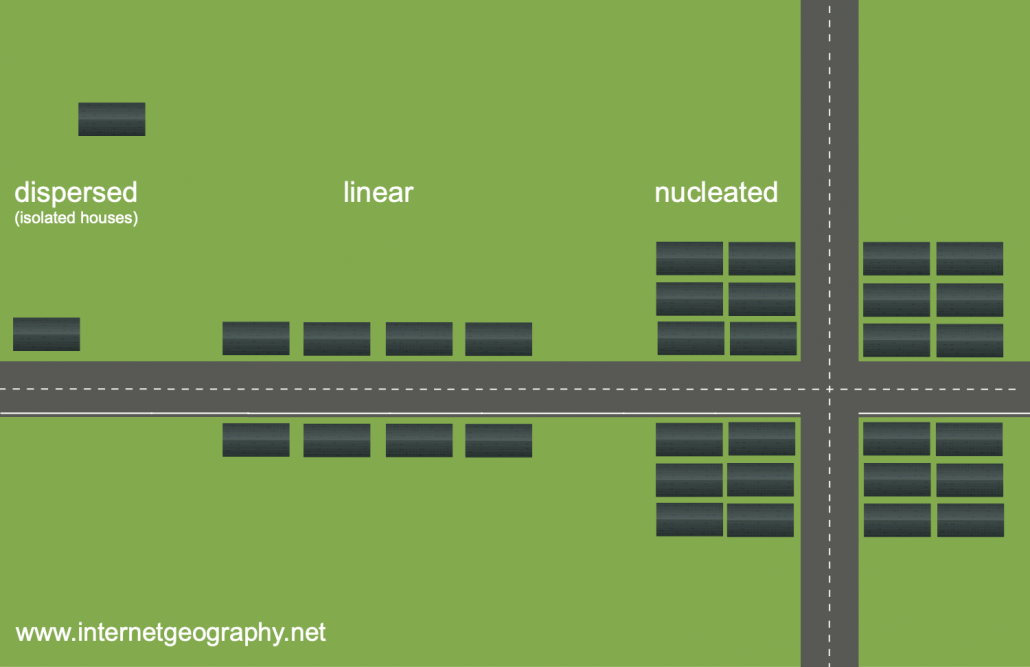Patterns of settlement
Settlements take on a range of shapes when they form. Dispersed, linear and nucleated are the most common.

Patterns of settlement
A dispersed pattern is where isolated buildings are spread out across an area, usually separated by a few hundred metres with no central focus. It is typically an area containing buildings rather than a single settlement. The population is sparsely distributed in a dispersed settlement. There are usually no services in a dispersed settlement.
Dispersed settlements usually occur in:
- remote or mountainous regions
- areas where the land is predominantly used for agriculture
- areas with limited job opportunities
- locations with few, if any, job opportunities
A linear settlement pattern occurs in a line or arc shape. They typically follow a road, valley or water body. This allows the settlement to utilise transport routes. They can also occur along valley floors where the sides are very steep.
A nucleated settlement occurs in a circular shape with buildings mainly concentrated around a common centre such as a road junction, park or service area. Most large cities are nucleated indicating they are well planned. Nucleation occurs due to:
- flat relief which is easy to build on
- the site has a bridging point
- the site is a good defensive position
- a good water supply
- no restrictions to development in any direction
- good job opportunities
- effective public services
- good transport links
Related Topics
Use the images below to explore related GeoTopics.


